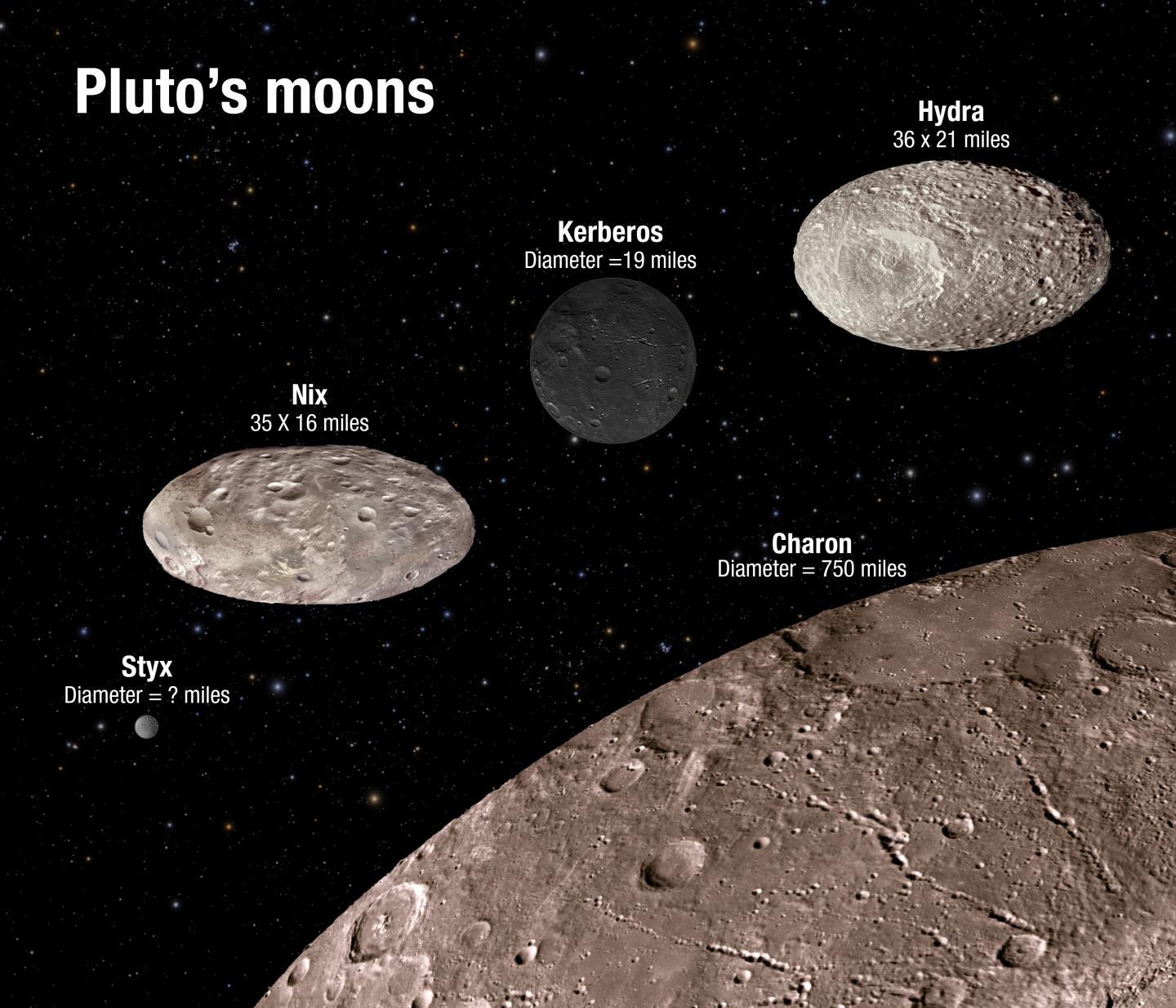The moons wobble because they're embedded in a gravitational field that shifts constantly. This shift is created by the double planet system of Pluto and Charon as they whirl about each other. Pluto and Charon are called a double planet because they share a common center of gravity located in the space between the bodies. Their variable gravitational field sends the smaller moons tumbling erratically. The effect is strengthened by the football-like, rather than spherical, shape of the moons. Scientists believe it's likely Pluto's other two moons, Kerberos and Styx, are in a similar situation.
Pluto's moons are believed to have been formed by a collision between the dwarf planet and a similar-sized body early in the history of our solar system. The smashup flung material that consolidated into the family of moons observed around Pluto today. Its binary companion, Charon, is almost half the size of Pluto and was discovered in 1978. Hubble discovered Nix and Hydra in 2005, Kerberos in 2011, and Styx in 2012. These little moons, measuring just tens of miles in diameter, were found during a Hubble search for objects that could be hazards to the New Horizons spacecraft as it passes the dwarf planet in July.

The scale and comparative brightness of Pluto's small satellites. The surface craters are for illustration only and do not represent real imaging data. Courtesy of NASA/ESA/A. Feild (STScI)
Mark Showalter of the SETI Institute in Mountain View, California says they also found three of Pluto's moons are presently locked together in resonance, meaning there is a precise ratio for their orbital periods.
"If you were sitting on Nix, you would see that Styx orbits Pluto twice for every three orbits made by Hydra," noted Hamilton.
Hubble data also reveal the moon Kerberos is as dark as a charcoal briquette, while the other frozen moons are as bright as sand. It was predicted that dust blasted off the moons by meteorite impacts should coat all the moons, giving their surfaces a homogenous look, which makes Kerberos' coloring very surprising.
The turmoil within the Pluto-Charon system offers insights into how planetary bodies orbiting a double star might behave. "We are learning chaos may be a common trait of binary systems," Hamilton said. "It might even have consequences for life on planets if found in such systems."
Clues to the Pluto commotion first came when astronomers measured variations in the light reflected off Nix and Hydra. Analyzing Hubble images of Pluto taken from 2005 to 2012, scientists compared the unpredictable changes in the moons' brightness to models of spinning bodies in complex gravitational fields.
Upcoming in the magazine Science.






Comments